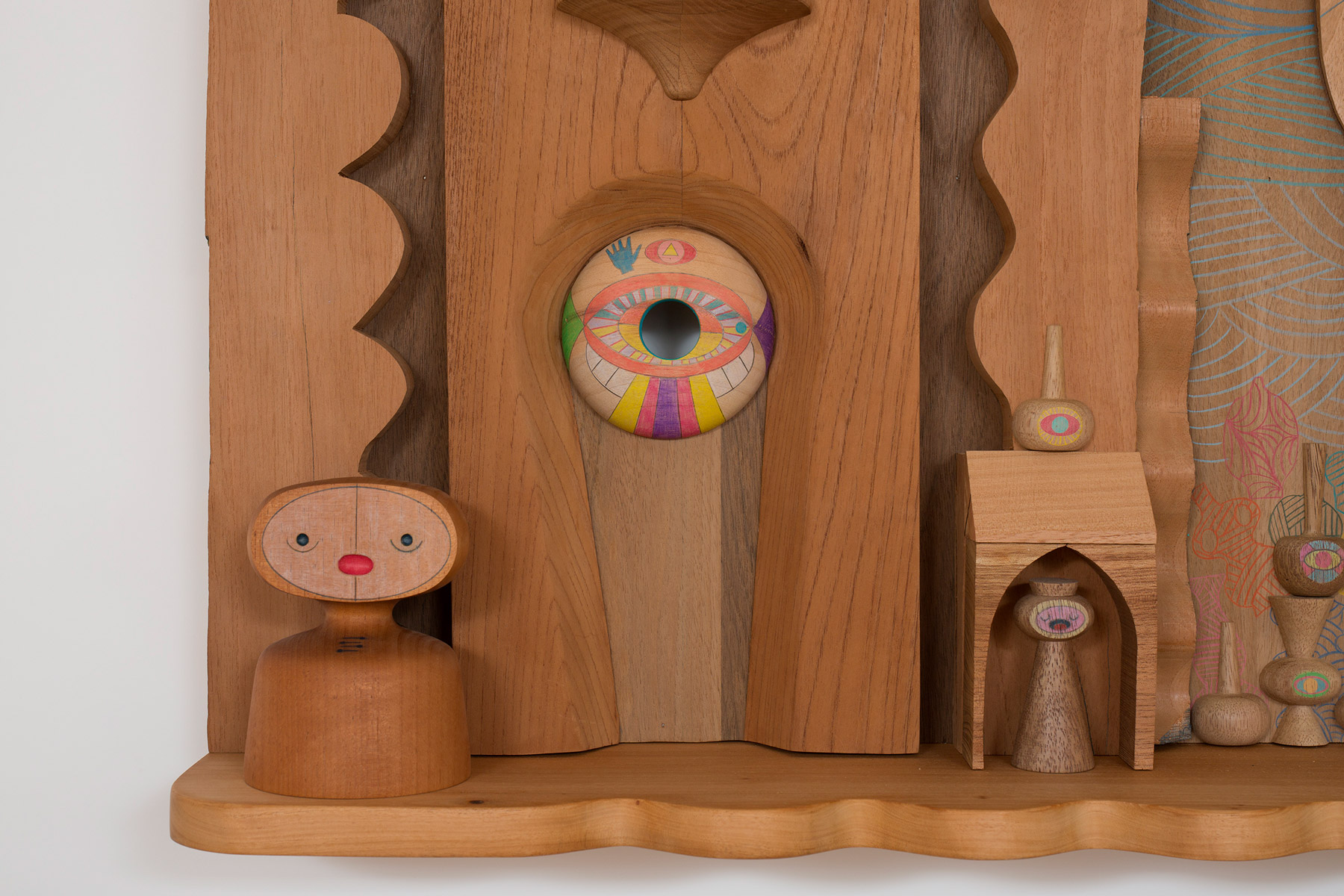
Review
From the inside looking in: Edgar Orlaineta at Proyectos Monclova
by Eric Valencia
The pupil is a hole that reveals the wall, or is it the wall that looks out at us through the work?
Reading time
7 min
1. The pleuronectiform: between flatness and volume
Pleuronectiforms (also called “flatfish") are an order of fish that spend their adult lives lying in sand. Although born bearing facial symmetry, with one eye on each side, as they mature this changes until both eyes occupy only one side of their body. They possess a pigmentation system that allows them to camouflage themselves, but only from the flank that faces out.
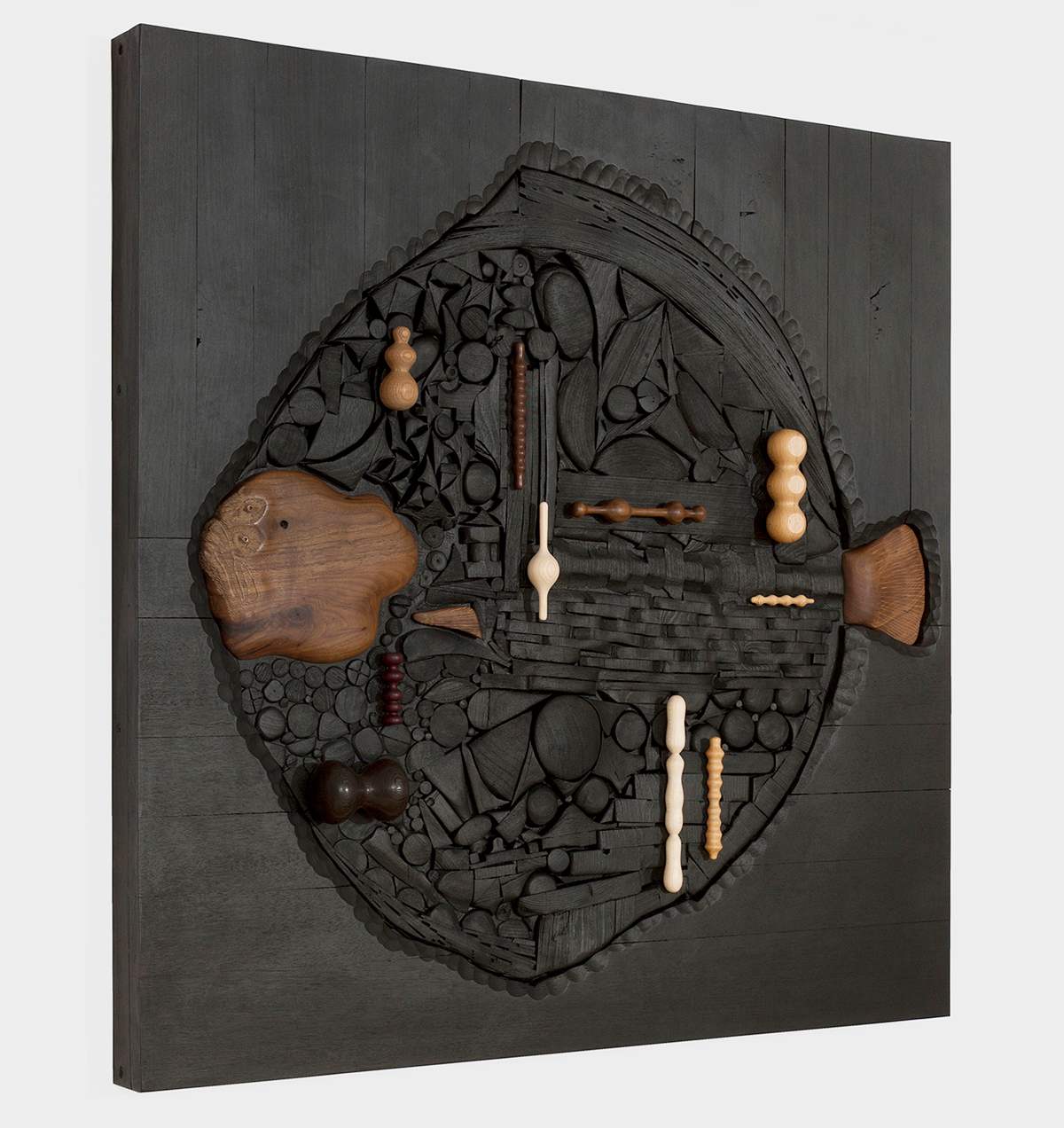
This peculiar fish’s name is part of the title of, as well as the principal motivation behind, Flat fish and biomorphic shapes (2020), with which Edgar Orlaineta opens the tour of his virtual exhibition From the inside looking in, at Proyectos Monclova.
The association is precise: the works in this exhibition constitute subtle transitions between what casts shadows and what reflects light: that is, between painting and sculpture. And we say painting and sculpture not in order to inscribe Orlaineta’s work in the endless debate about mediality, but rather in order to mark the transition between two stages of the art object in its topological qualities: the flat-virtual and the voluminous-real.
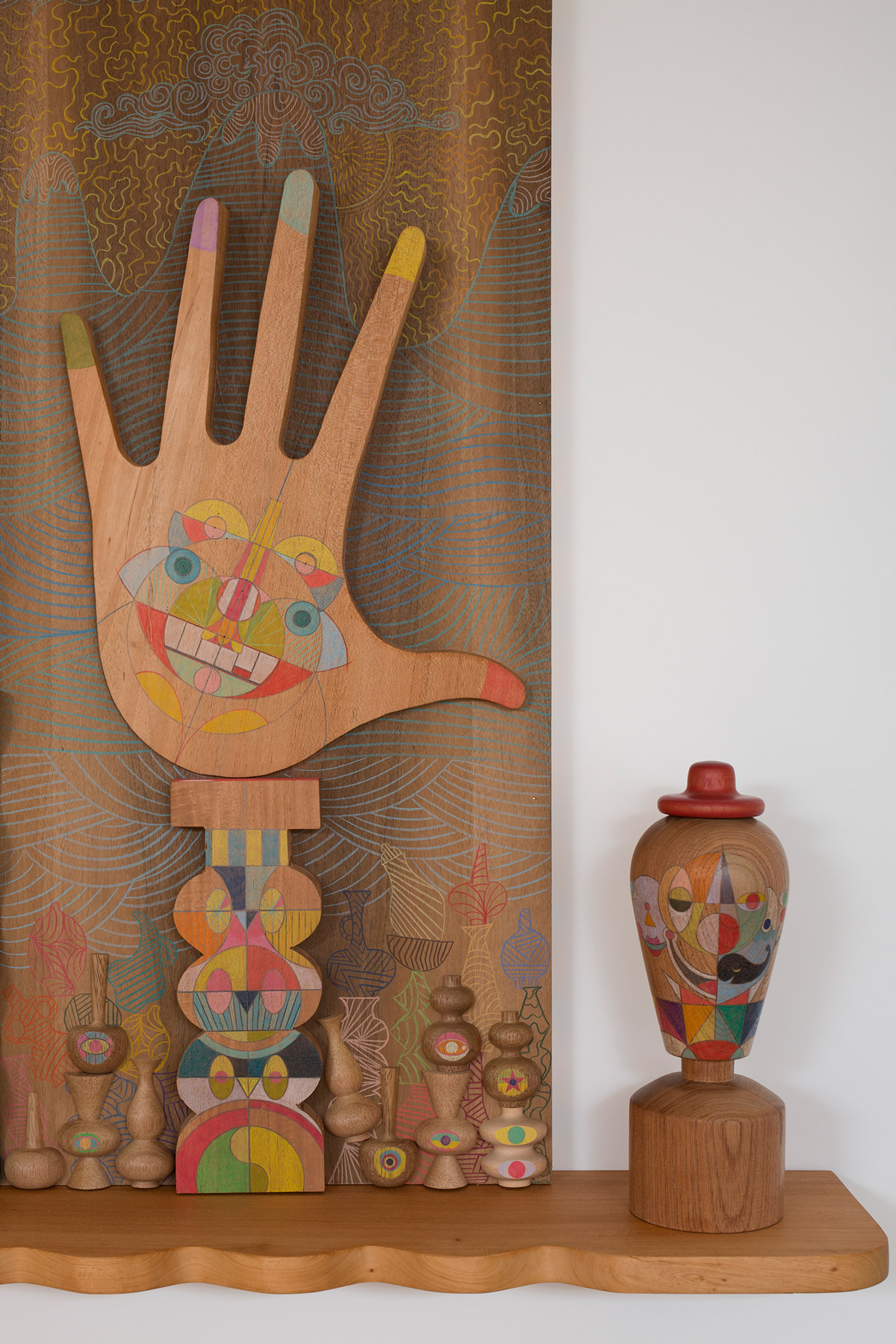
2. Non-negative allegory
On another level, the works belonging to From the inside looking in function as tropological passages between metaphor and literality. For example, in Flat fish and biomorphic shapes, the flatfish functions as a metaphor for transit, while the biomorphic shapes referred to in the title correspond to the realm of the literal. Previously Craig Owens (“The Allegorical Impulse: Toward a Theory of Postmodernism, Part 2,” 1980) enunciated the presence of these contradictions as constitutive elements of allegory. Paraphrasing Paul de Man, he noted that allegory is “the structural interference of two distinct levels or usages of language, literal and rhetorical (metaphoric), one of which denies precisely what the other affirms.” Even if we observe in Orlaineta’s work a kind of allegorical impulse in the use of these two levels of language, what’s surprising, and what escapes the canonical definition of genre, is the absence of a reciprocal negation.
To exemplify the negation between the literal and the metaphorical, Owens quotes in the same text a long fragment from Laurie Anderson’s play Americans on the Move (1979), in which a story is told about a palmist who errs in every one of her interpretations: the palm as synecdoche of the artist’s history, but also simply as palm, as both object and path guiding the fortune teller’s spurious exegesis. In the work Mexican Handcrafts (2020), one of the main elements is the outline of a hand, whose lines are shown to us as a smiling face. Has it read itself? Could it do so erroneously? The game is further extended as we notice that this same hand is an object protruding from the pictorial plane in a movement of emergence or three-dimensional immersion, which we observe from the sheet’s changing thickness. The painting upon which the hand is located shows a landscape in which we recognize the finger-like peaks of a mountain range: the repetitions of lines could refer as much to an orographic description as to the wrinkles of a hand: or to both, at once.
Here the poles don’t contradict each other: they camouflage each other.
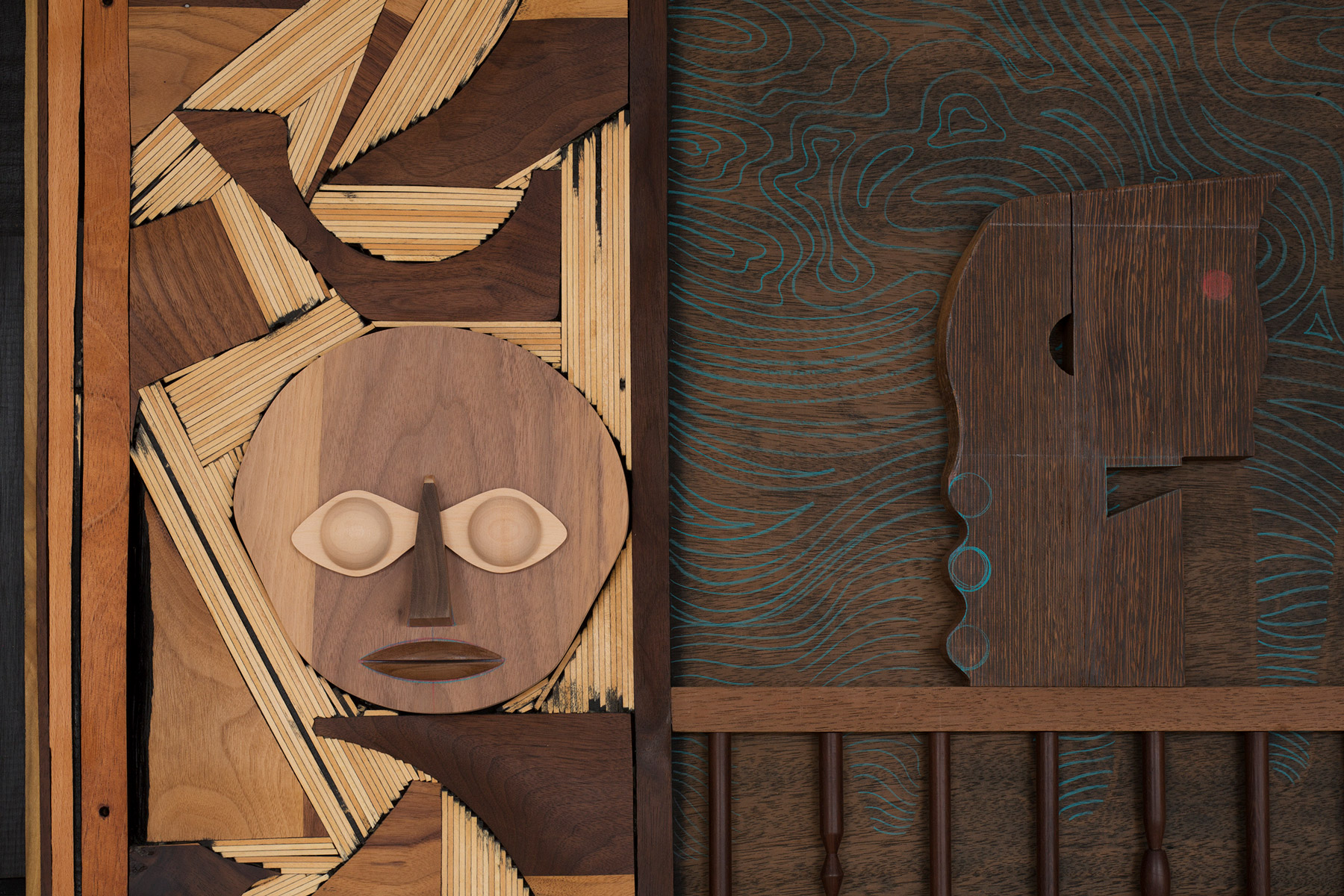
Face and mask
In this game of interactions, we notice that the works making up From the inside… are presented as a chain of topological and tropological problems, whose “development” we can observe in the repetitive presence of certain elements. The mask, the face, the flatfish, the turning cylinders, to name just a few, are objects that function as passages between axes traced by oppositions, as much between the voluminous and the flat as between the literal and the metaphorical.
The mask as “problem of frontality, as an idea of pictorial,”* also functions as an element that covers the face, a word designating both countenance and the observable side of things. In the work Wax and Wane (2020), the face’s silhouette is a plane that alludes to a mask; however, the nose, mouth, and eyes, which we would usually find hidden behind, lie on top: they have been superimposed. In this same work we find an operation with material that we intuit to be similar: some surfaces have been constructed by accumulating small pieces of wood stacked perpendicular to the tableau, leaving hidden the sheets’ faces and letting us see only their edges.
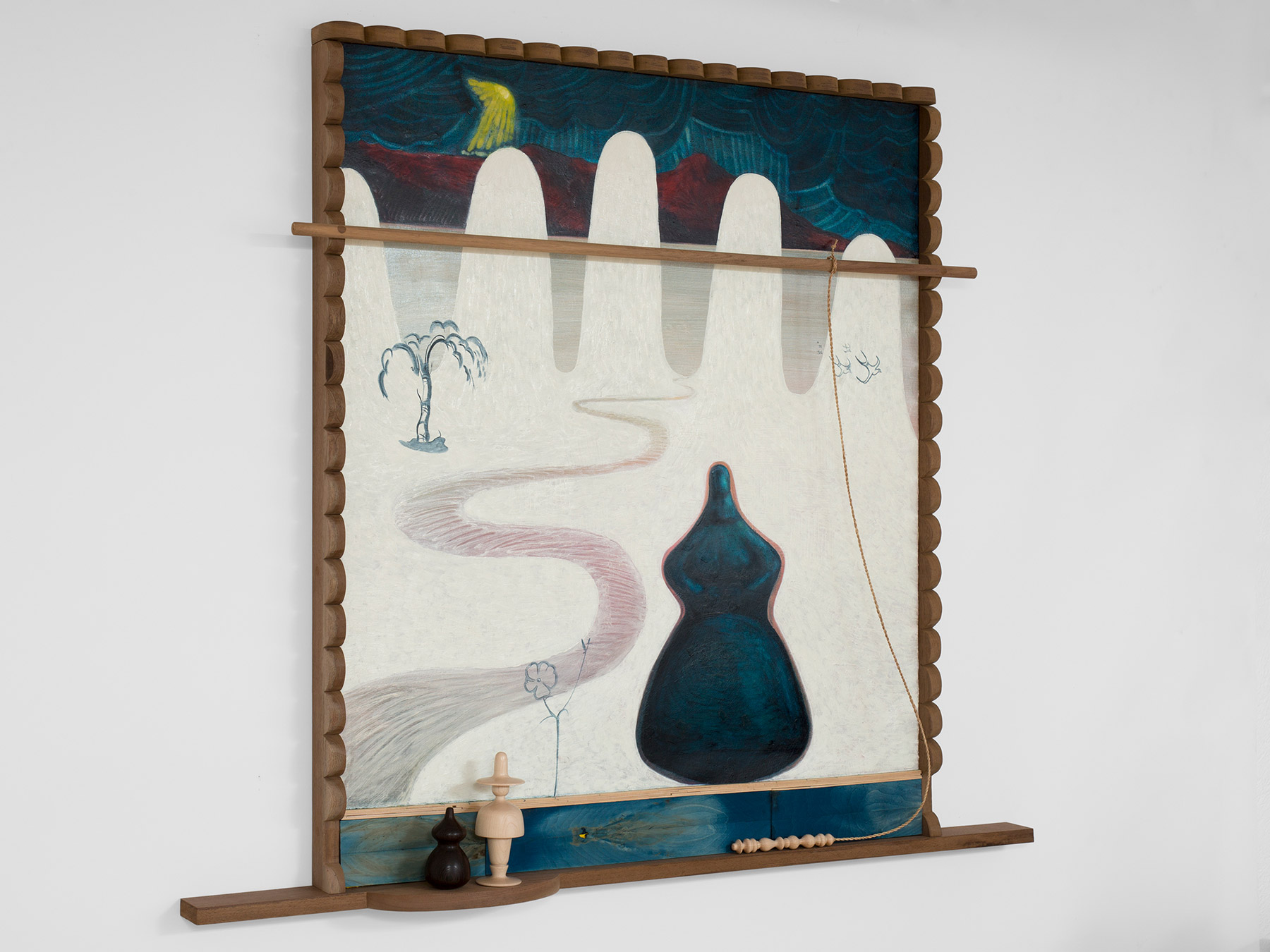
The problem of frontality is particularly interesting in the work Flatfish and biomorphic shapes. The pleuronectiform has, qua animal, one countenance-face and, qua flat plane, two side-faces. As we’ve mentioned, while young, its countenance-face is symmetrically divided across its two side-faces, but as it grows up, it renounces one of these in order to transfer its countenance-face to only one of its side-faces. And as we’ve said, this is something we notice especially in the displacement of one of its eyes. So, what’s its front? What’s its front now?
But it’s not only that, since if we consider that their eyes see (us)—in the course of their life they go from a binocular vision allowing them to see volume, when their eyes are separated, to an almost monocular vision in which they see everything as almost flat, when their eyes come together in adulthood—the look that this fish returns to us, whether in the sea or in the work, ends up flattening what it sees. It flattens us!
4. Eyes and cylinders
In the show, the turning cylinder performs different functions depending on its particular characteristics. In Tishbite (2020), there are cylinders cut crosswise, painted black, and embedded in the work, acting in the way of texture. But three more stand out in the original light color of uncut wood, positioned on a small base. The work’s title refers to strangers or outsiders, whom we thereby imagine the small nomadic characters to be. Thus so they appear once more, but now as a couple, in Mexican Handcrafts, where they are also accompanied by other turning volumes on which geometric anthropomorphic features have been painted. In Figure and five mountains (2020) they rest on the frame; we see that one of them has even been painted (has migrated?) onto the canvas.

In Mexican Handcrafts, embedded in what resembles an architectural structure, there’s an eye, a tremendous eye. At its top part, in primary colors, are two drawings: a hand on the right side and an eye consisting of an oval and a triangle on the left side. At its bottom part, it smiles at us.
The pupil is a hole that reveals the wall, or is it the wall that looks out at us through the work?
From these enumerated elements, one can glimpse the way in which the canonical functions of the sculptural and the pictorial are transformed in this exhibition. The pieces interrupt the modern tradition of these two media as exclusive poles in order to present them as limits of intensities through which the works transit. And not only that, but these limits are camouflaged, one with the appearance of the other and vice versa, allowing us to roam in amazement through these improbable passages.
* Orlaineta, E. 2020. Retrieved at http://proyectosmonclova.com/
Visit the exhibition here.
Published on July 30 2020